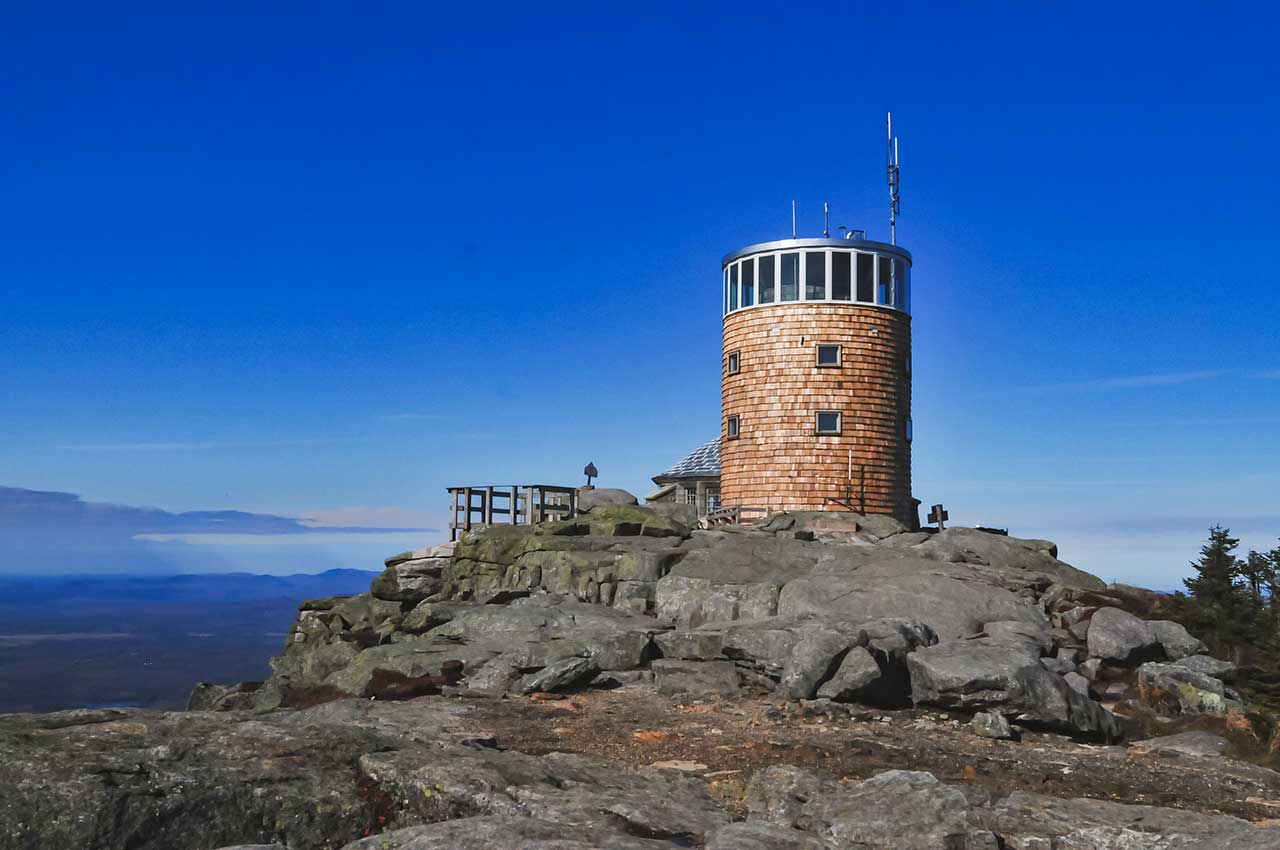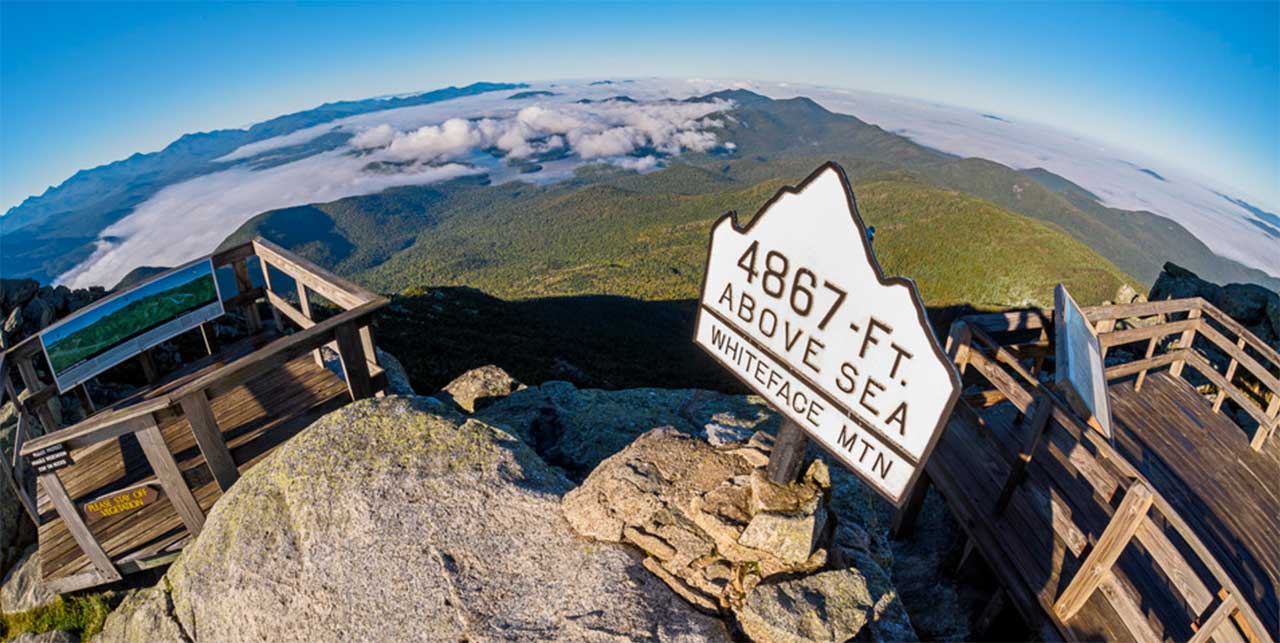

Image Description (above): Drone still of Atmospheric Sciences Research Center (ASRC) Marble Mountain Lodge and Research Offices in Wilmington, New York courtesy Scott McKim NYS Mesonet. The main lodge and lecture hall facility is shown on the lefthand side of image; research offices shown center of image; and New York Sate Mesonet 'WFMB' standard site shown in clearing up and behind research offices. Marble Mountain Lane leading to field station seen on the right.
Where We Are
Unique and Persistent Atmospheric Science Research Facilities
The ASRC Field Station is located in the Northeastern quadrant of the Adirondack Park in northern New York State. The station operates two environmental monitoring sites at this location which resides in the town of Wilmington, New York. The Adirondack Park in upstate New York covers roughly 2.4 million ha and is the largest publicly protected area in the contiguous United States. Approximately 20% of the park is at elevation above 600 m. Whiteface Mountain is located in the northeastern ("High Peaks") region of the park, and is climatologically downwind of large point sources and metropolitan areas in western New York, the industrial Midwest, and Canada.
As there are few large population centers in the immediate region, the location is well-suited to characterize the impacts of transport and aging on air quality and deposition in New York and the northeast U.S. The Marble Mountain Lodge site is located on the eastern shoulder of the Whiteface Massif at Latitude N 44°23'35" and Longitude W 73°51'33" with an elevation of 604 m above sea level.


A relatively small percent of the Whiteface Mountain area has been influenced by man. The greater portion remains in an undisturbed and natural state. These important conditions can be expected to prevail because this land is part of the Forest Preserve of New York State, designated in the New York State constitution to be preserved in a “Forever Wild” state for the people and for the future. In 1962, the Whiteface Mountain Site Manager and ASRC Director wrote:
“These fortuitous circumstances provide contrasting, yet controlled, conditions for scientific approaches to the phenomena of the mountains. This stability of expected conditions makes possible a wide range of scientific operations, some of which may require years and for which evaluation of successive changes, and those of contrasting influences is desirable” (Falconer and Barry, 1963).
